Mughal Jewels Auction: Al-Thani Collection Raises $109 Million
July 16, 2019
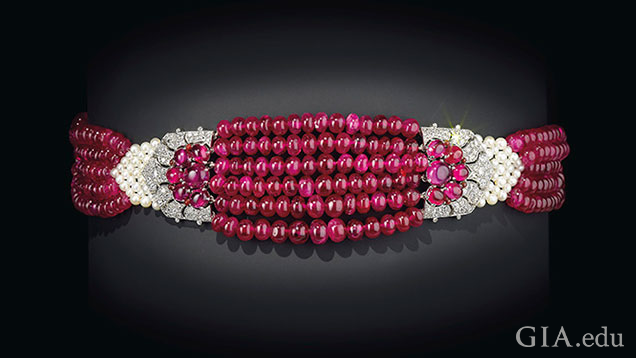
Collectors from around the world descended on Christie's Maharajas & Mughal Magnificence auction of jewels from the Al-Thani Collection on June 19. By the time the New York sale ended, they had spent nearly $110 million for 353 lots, with 10 items selling from $1.7 million to more than $10 million.
The pieces came from the most renowned and comprehensive collection of Mughal jewels, owned by Sheikh Hamad bin Abdullah al-Thani of Qatar. Al-Thani is using the proceeds from the sale to open a museum in Paris to house the estimated 6,000 remaining pieces of his collection of Indian and Islamic art and jewelry.
India, which was the world’s treasure house of gemstones for millennia, comprised more than 500 semi-autonomous states at the beginning of British rule in 1858, with many of the rulers holding massive collections of gems and jewels. The collections grew in extravagance after the British assumed control because much of the wealth and power of the Mughals shifted to local rulers who no longer competed for military might, but to see who could amass the most jewels.
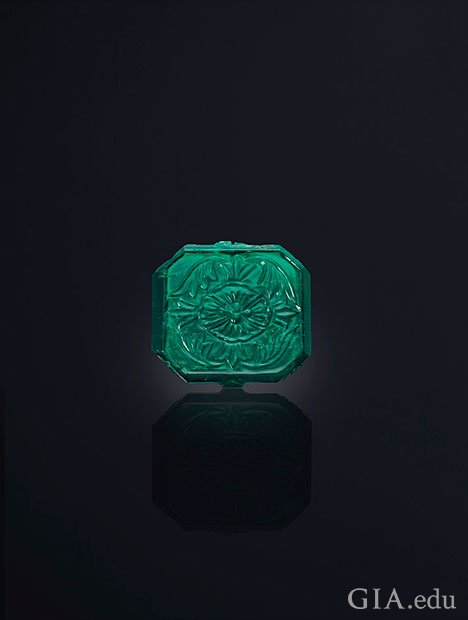
Emperor Shah Jahan
Several pieces from the most famous Mughal ruler, Shah Jahan, drew some of the most intense bidding. Jahan ruled from 1628 to 1658, which is considered the peak of the Mughal Empire. His fame lies in ordering the building of India’s most enduring architectural landmarks, including the Taj Mahal, the Agra Fort, the Red Fort and the Wazir Khan Mosque.
The Shah Jahan carved emerald of 30.60 cts, mined in Colombia, sold for $555,000, while his carved spinel and enamel seal ring from 1643 or 1644 brought $795,000. Jahan’s white jadite dagger, the next to last lot in the sale, sold for $3.4 million, a record for a piece owned by the ruler.
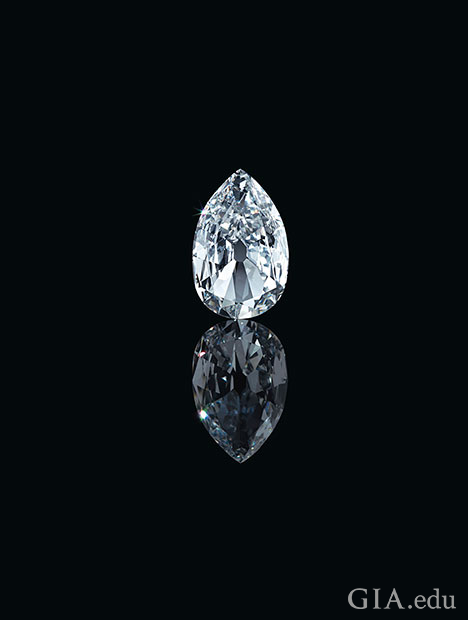
Diamonds from the Famed Golconda Mines
Several Golconda diamonds (generally Type IIa taken from the ancient mines of India’s Golconda region) also sold at the sale. The Arcot II, a 17.2 ct pear shaped graded by GIA as D IF, fetched $3.4 million. The diamond was found in Golconda in the 18th century and was presented to Britain’s Queen Charlotte, wife of George III, in 1777 by the Nawab of Arcot. It was later returned to private hands and recut to modern specifications in 1959. After al-Thani acquired the diamond, it was again recut in 2011.
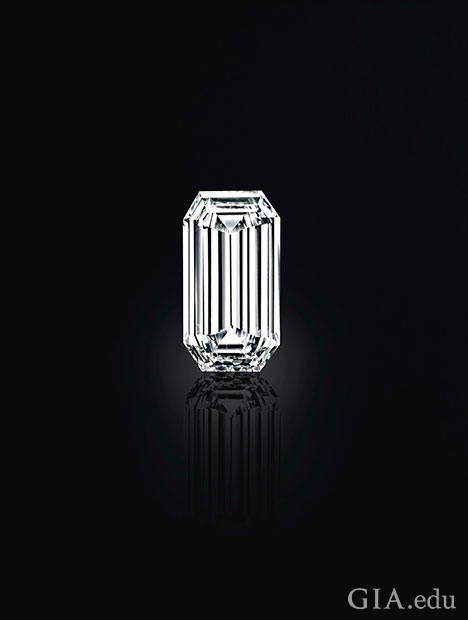
The Mirror of Paradise, a 52.58 ct cut corner rectangular shape diamond, GIA-graded D IF, brought $6.5 million. The provenance of the diamond is uncertain, except that it was found in the Golconda region and has been recut to modern proportions. Christie’s sold the diamond in 2013 for nearly $11 million.
Nizams of Hyderabad
The jewels from the estate of the Nizam of Hyderabad were put up for sale in the early 1980s, unlocking one of India’s long held treasure chests.
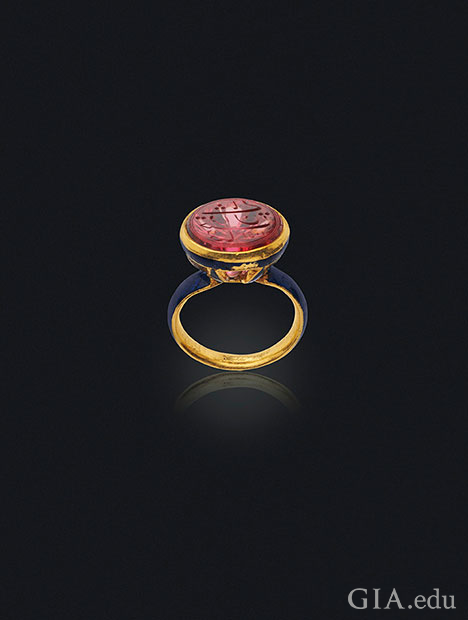
Under Mughal rule in the 17th century, the region around Hyderabad became increasingly independent under the Asaf Jahi Dynasty, whose rulers were known as Nizam. The dynasty continued through the British colonial era until the newly independent central government of India abolished the princely states in 1948.
After independence, the Indian government and the Nizam’s family wrangled over control of their jewel collections, which had become the world’s largest. After years of court battles, the government purchased much of the collection, while the family sold the remainder in a series of auctions. Al-Thani later acquired some of the pieces sold at the June 19 Christie’s auction.
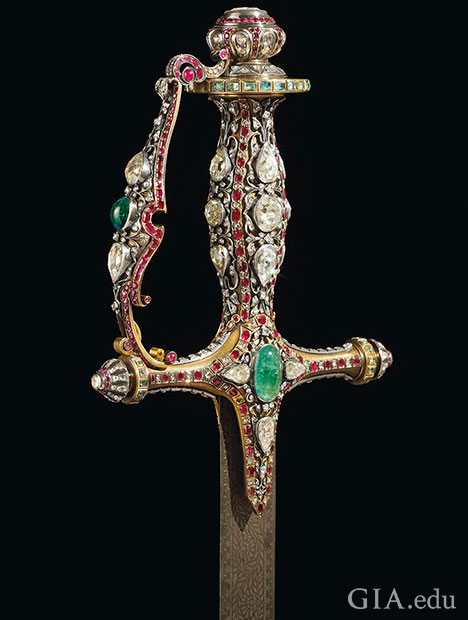
The Nizams took seriously the notion that jewels symbolized royal power. Accordingly, one of the major pieces in the sale was a ceremonial sword whose handle was studded with large traditional Mughal cut diamonds, rubies and emeralds that sold for $1.9 million. A necklace from the Nizam estate, featuring 33 round cut Golconda diamonds, ranging from 9.9 cts to 24.38 cts, also brought $1.9 million.
Cartier Jewelry Pieces
Indian rulers began to compete with their European counterparts for jeweled wealth in the 19th century. So the major European houses, Cartier in particular, began to make regular visits to the continent. Indeed, the Maharaja of Patiala gave Cartier its single largest commission ever in the 1920s, when he asked the firm to reset his crown jewels.

One piece from the Maharajah’s commission, the Patiala ruby choker with diamonds and natural pearls, sold for $975,000 at this sale. A Cartier-made art deco emerald and diamond brooch sold for $1.5 million, which was the final lot of the sale.
Cartier also fashioned the costliest piece in the auction, a Belle Époque-era Diamond Devant-de-Corsage brooch that sold for $10.6 million. This brooch, which contains several large Golconda diamonds, was made for Solly Joel, one of De Beers’ founders in 1912. The largest diamond in the brooch was a 34.08 ct E VVS1 Type Ia pear shape; followed by a 23.55 ct D VVS2 oval (potentially flawless) Type IIa; a 6.61 ct D VS1 Type IIa marquise cut and a 3.54 ct E VS1 Type I a heart shape diamond. All were graded by GIA.
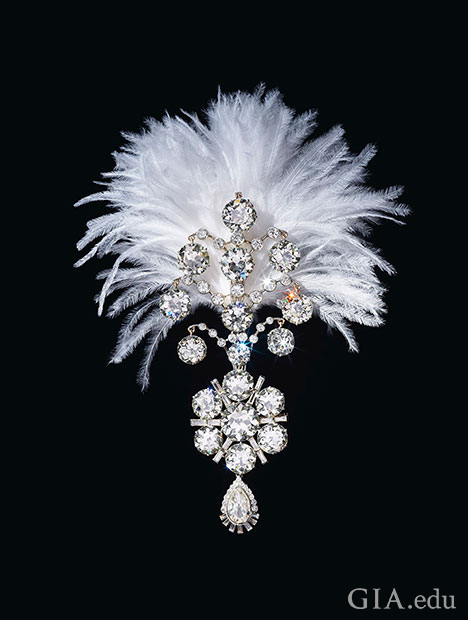
Other very significant lots included the catalog cover piece, a Belle Époque Jigha (turban ornament) with baguette and pear shaped diamonds, set in white gold and topped with a white feather plume, which sold for $1.8 million.
The Baroda pearl canopy from 1865-70, with thousands of natural pearls set in geometric patterns on a round cloth, was commissioned by Maharaja Khanderao Gaekwad of Baroda and passed by descent to Maharani Sita Devi of Baroda. The hammer came down at over $2 million; the total came to $2.23 million, with the addition of the auction house premium.
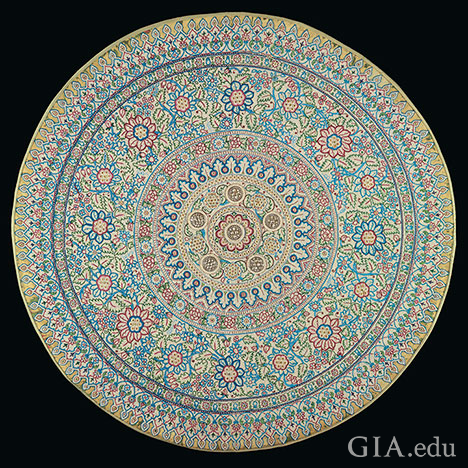
See the Al-Thani Collection on Display in 2020
Many of the objects and pieces in the sale were part of an exhibition dedicated to the Al-Thani Collection at New York’s Metropolitan Museum of Art in 2014.
The remaining Al-Thani Collection will find a permanent home at the Hotel de la Marine, in Paris, starting next year. The Hotel de la Marine is the former city palace built by Louis XVI and, after 1789, housed government offices until 2015 when it was closed for renovations. The building, restored to its original 18th century décor, will house a museum of French royal history, as well as the Al-Thani Collection.
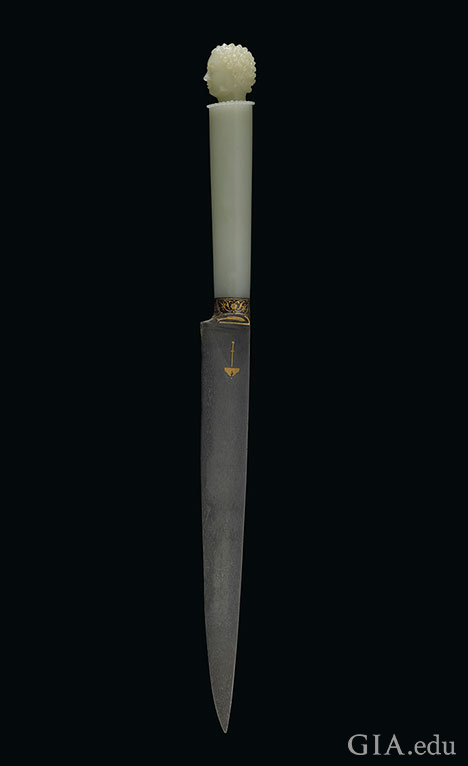
The Al-Thani Collection Foundation, which managed the holdings, noted that the sale of a small part of the collection will enable it to offer a full program to the public, including exhibitions, conferences and educational activities. Part of the sale proceeds will support ongoing initiatives of The Al-Thani Collection Foundation, which extend from exhibitions, publications and lectures to sponsorships of projects at museums around the world.
Russell Shor is senior industry analyst at GIA in Carlsbad.



